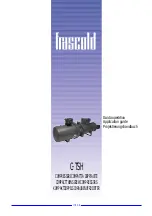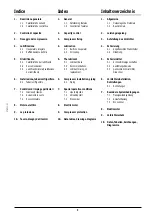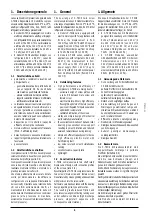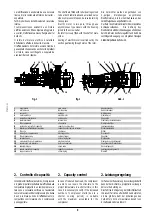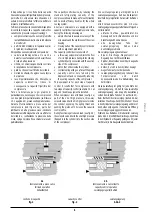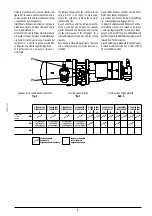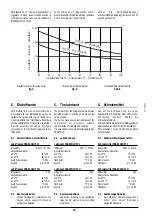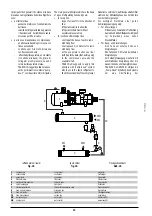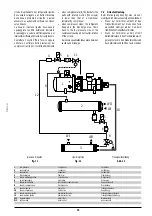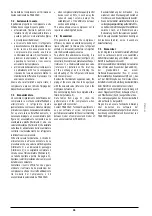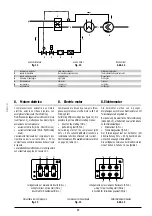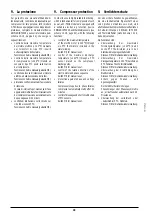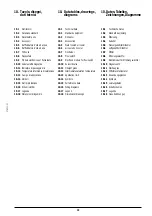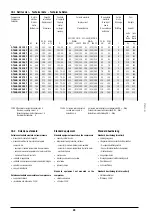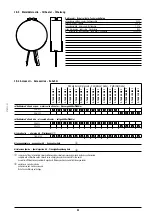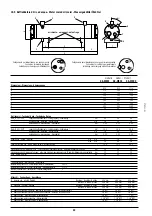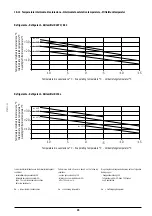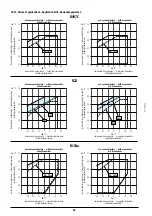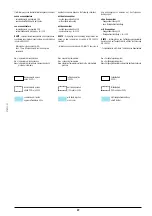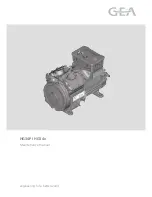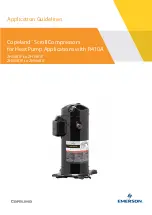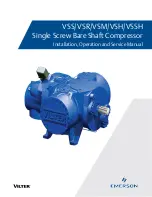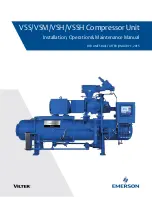
13
FTEC11-01
7.
Condizioni di impiego
particolari
Se installato in ambiente molto freddo, è
necessario isolare termicamente il separatore
per evitare che al suo interno il refrigerante
condensi durante le fasi di arresto del
compressore.
Nel caso in cui il compressore o la linea di
aspirazione siano posti in ambienti con
temperatura inferiore a quella dell’evaporatore,
è necessario realizzare il funzionamento “pump-
down”.
In questo caso, per evitare danni derivanti dalla
migrazione di liquido, il pressostato di bassa
pressione deve essere tarato ad un valore
inferiore alla minima pressione di aspirazione di
lavoro del compressore.
7.
Besondere
Systembedingungen
Im Falle niedriger Umgebungstemperaturen,
ist eine Isolierung des Ölabscheiders
erforderlich, um innen die
Schmiermittelkondensation beim Verdichterstop
zu vermeiden.
Wenn der Verdichter oder die Saugleitung
Temperaturen ausgesetzt werden, die tiefer als
die Temperatur des Verdampfers sind, muß eine
„Pump-Down“ Schaltung realisiert werden.
Um Schaden von Flüssigkeitsverlagerung zu
vermeiden, soll der Startbefehl des Niederdruck-
Pressostat unterhalb der niedrigst
vorkommenden Druck erfolgen.
Es sollten alle Maßnahmen vorgenommen
werden um einen Mindestöldruck von 4 bar,
7.
Special operative
conditions
When oil separator is placed in a cold site, it
must be properly insulated to avoid the
refrigerant condensing inside during
standstill periods.
If the compressor or suction line reach
temperature lower then the one of the evaporator,
a “pump-down” circuit must be realized.
The cut-in point of the low pressure switch must
lower than the lowest suction pressure od the
compressor.
It is recommended to perform any sort of
procedure to grant minimum difference in
pressure of 4 bar between discharge and suction
within 10 seconds from compressor starting.
For flooded evaporator, fit the system with a
al compressore in caso di improvvisa
mancanza di alimentazione elettrica.
-
negli impianti con controllo di capacità
particolarmente spinto, realizzare il doppio
montante per garantire il ritorno
dell’olio anche in condizioni di
carico ridotto.
Un’accorgimento supplementare consiste
nell’installare una valvola elettromagnetica prima
della valvola termostatica per evitare trafilamenti
di refrigerante liquido durante le fasi di arresto.
Immediatamente dopo il rubinetto di mandata
del compressore, è necessario che la tubazione
abbia un andamento discendente.
Le linee frigorifere vicine al compressore devono
essere sufficientemente flessibili e avere, il più
possibile, un andamento parallelo all’asse di
rotazione.
In funzione del tipo di refrigerante e delle
condizioni di impiego, evitare linee di aspirazione
eccessivamente lunghe.
In caso di circuito realizzato sul luogo di
installazione, impiegare un filtro di aspirazione
(grado di filtrazione 25
µ
m) per proteggere il
compressore dai danni causati dalla presenza
di eventuali residui solidi nel sistema frigorifero.
Per evitare eccessive concentrazioni di
refrigerante nel lubrificante durante le fasi di
arresto del compressore, installare il riscaldatore
olio a fascia da 300W fornito con il compressore
stesso (vedi 10.2 “Dotazione standard”).
Con il compressore installato in un ambiente
molto freddo oppure funzionante con elevate
temperature di compressione, è necessario
rivestire il separatore integrato con materiale
termoisolante.
in case or power cuts.
-
in case of cooling system with
large capacity control it is necessary
to realize a twin riser to grant the oil
return with reduced capacity.
Additional safety is provided by a solenoid
valve fitted directly before the thermostatic
expansion valve to prevent liquid bleeding during
standstill periods.
In addition, the discharge line should first be run
with a fall after the shut-off valve.
Nevertheless, the piping of the cooling system
has to be flexible and not exert any strain
on the compressor.
Pipes running parallel to the compressor axis
have been found to be favourable.
Critical length of pipe sections should be avoided
(dependent upon operating conditions and
refrigerant).
The installation of a suction side clean-up filter
(screening 25
µ
m) will protect the compressor
from damage due to debris from the system
and is strongly recommended for individually
built plants.
The 300 W oil heater, supplied with the
compressor (see 10.2 “Standard equipment”),
must fasten the oil separator shell to prevent
high concentration of refrigerant in to the
lubricant during the standstill of the compressor.
If the compressor is located in low temperature
ambient or in case of operation with high
discharge pressure, the built-in oil separator must
be insulated.
Verdichtersaugseite zu vermeiden
-
In den Anlagen mit Hohen
Leistungsreduzierungen, durch führen
den Doppelstiel um die doppelte
Ölrückkehr zu gewähren, auch unter
Bedingungen von Reduktionsfüllung.
Zusätzliche Sicherheit ist zu gewinnen durch
den Einbau eines Magnetventils unmittelbar
vor dem E-Ventil um ein Vollaufen des
Verdampfers während der Stillstandsphase zu
verhindern.
Die Druckleitung sollte nach dem Verdichter ein
Gefälle aufweisen.
Die Rohrleitungen müssen derart installiert sein,
daß keine Spannungen für den Verdichter
entstehen. Dabei sind Leitungen, die parallel zur
Verdichterachse verlegt sind, zu bevorzugen.
Übermäßig lange Rohrleitungen sollten
vermieden werden (hängt von der Anwendung
und vom Kältemittel ab).
Die Installation eines Saugleitungsfilters
(mit 25
µ
m) wird den Verdichter vor
Beschädigung durch verbliebene Schmutzteile
schützen und ist dringend zu empfehlen, vor
allem bei individuell gebauten Anlagen.
Um hohe Kältemittelanreicherung im Schmieröl
während der Verdichterstillstandsperioden zu
verhindern, dient eine Ölheizung von 300 W,
die mit dem Verdichter geliefert ist (siehe 10.2
“Standard Ausrüstung”).
Betrieb bei niedrigen Umgebungstemperaturen
oder mit hohen Temperaturen auf der
Hochdruckseite während dem Stillstand erfordert
zusätzliche Isolierung des Ölabscheiders.

